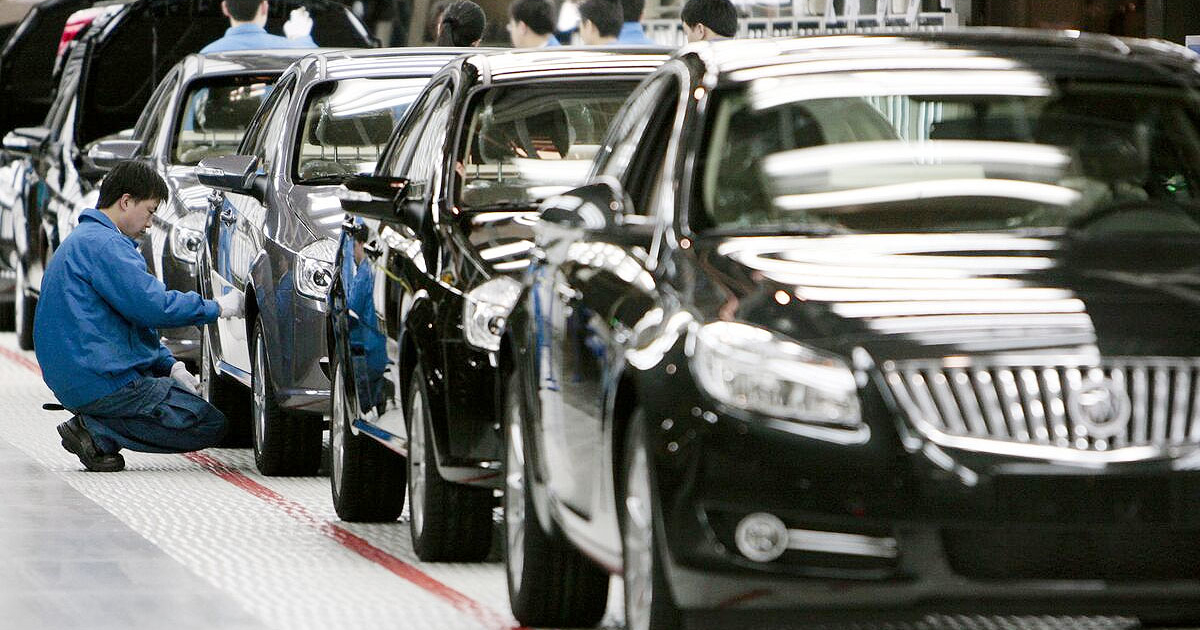
Maybe fleet sales aren’t so bad after all.
U.S. light-vehicle deliveries rose 8.5 percent in the first quarter of 2023, according to the Automotive News Research & Data Center, as an easing of the global microchip shortage improved inventories for most brands.
General Motors and Hyundai Motor Group each posted double-digit gains, even as transaction prices remained at record levels. Cox Automotive said the industry’s annualized selling rate jumped to 15.3 million, from 14.1 million a year ago.
“Anyone looking for signs of a recession won’t find it in the new-vehicle market,” Cox Senior Economist Charlie Chesbrough said.
Much of the increase was driven by fleet sales, as higher production levels allowed automakers to fill orders more easily instead of diverting their limited supplies to retail buyers.
Ford said fleet sales across the industry rose 37 percent from a year ago. The automaker did not break out its own fleet sales but reported an 86 percent jump in sales of Transit vans, most of which go to commercial buyers. Ford’s overall sales were up 9.9 percent.
GM said its fleet sales surged 27 percent and represented 25 percent of first-quarter volume, or roughly 150,000 units. Overall Q1 sales at GM rose 18 percent to about 600,000.
“Normally, it could be considered a sign of weakness,” Tyson Jominy, vice president of data and analytics at J.D. Power, said on Automotive News’ “Daily Drive” podcast. “But now that the fleet channel is so profitable, this is actually a great sign of profitability for automakers, that they can move vehicles from one channel to the other to maximize revenue.”
Although the industry’s selling rate of 14.9 million vehicles in March was weaker than both January’s 16.1 million and February’s 15.1 million, that doesn’t necessarily indicate the market is weakening heading into the spring selling season, Jominy said.
“We don’t have enough vehicles to feed the seasonality that should be there,” he said. “Raw [sales] numbers provide a better indication of what’s going on right now.”
Hyundai Motor was among the big winners last quarter, with sales up 19 percent over the same period a year ago as the Hyundai and Kia brands set records.
“Retail, fleet and commercial demand remain very strong,” said Randy Parker, CEO of Hyundai Motor America. “I still believe there is a lot of pent-up demand in the marketplace right now because of the chip shortage. But what’s fueling a lot of people’s success is that availability is definitely improving.”
Not everyone had success. Toyota Motor Corp.’s deliveries declined for a third straight month as the Toyota brand fell to No. 3 in the U.S. behind GM and Ford. Both Toyota and Lexus have been dogged by some of the lowest inventory levels for months.
Stellantis’ first-quarter sales slid 9.1 percent, behind a drop of 20 percent at Jeep and 6.8 percent at Ram, with volume up at two much smaller divisions, Dodge and Chrysler. The company, with some of the industry’s highest inventory levels and climbing incentives, has seen U.S. sales decline seven consecutive quarters.
Mark Stewart, COO of Stellantis, told Automotive News the automaker wouldn’t cut production or raise incentives, but would focus on adjusting its mix away from high-end trim levels through the remainder of the year.
“As we come into a more inflationary environment, it’s more about looking into the affordability for folks with the change in the interest rates,” he said. “We’re — knock, knock — feeling good. The industry seems to be hanging in there. From that standpoint, we’re excited about our lineup of product and making sure we’re getting all that around the country with the right mix for the customers.”
Pricing continues to be a headwind despite the strong quarterly figures.
The industry average in March reached a record $45,818, up 3.5 percent from a year earlier, according to J.D. Power and LMC Automotive. TrueCar estimates the average transaction price was $45,397 with shipping, flat with February but up 5.6 percent from a year ago.
Analysts say the market could rebound even further if prices moderate.
“While the outlook has improved slightly, any true strength in recovery once fleet sales are replenished will hinge on vehicle pricing,” Jeff Schuster, executive vice president of global data at LMC Automotive, said in a statement. “There is pent-up demand and there are consumers that could re-enter the new vehicle market if pricing were to fall more than 10 percent from current levels and if a more severe recession is avoided.”
Chris Hopson, principal analyst at S&P Global Mobility, said retail demand — though muted — reflects “consumers willing, ready and able” to buy a new vehicle, even in light of rising interest rates and high price levels.
“The specter of further hikes in interest rates and acceptance of current unsettled economic conditions may be providing impetus for those considering purchasing a new vehicle,” he said.
Showroom traffic and purchase intent remain strong, said Brad Audet, chief marketing officer for Mazda North American Operations, but rising interest rates, monthly loan payments and down payments are challenging conversion rates.
“The industry, as a whole, has an affordability problem right now,” Audet said.
Hyundai’s Parker, however, said demand remains high and any price resistance by consumers is minimal.
“I do see those transaction prices moderating a little bit as we go forward and as availability continues to improve,” he said. “I think that will benefit the consumer going forward.”

